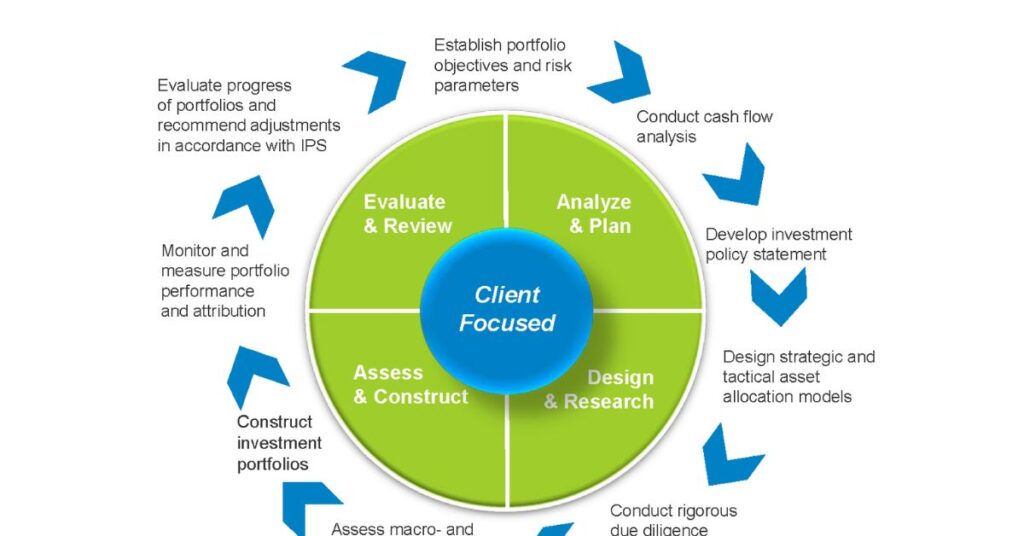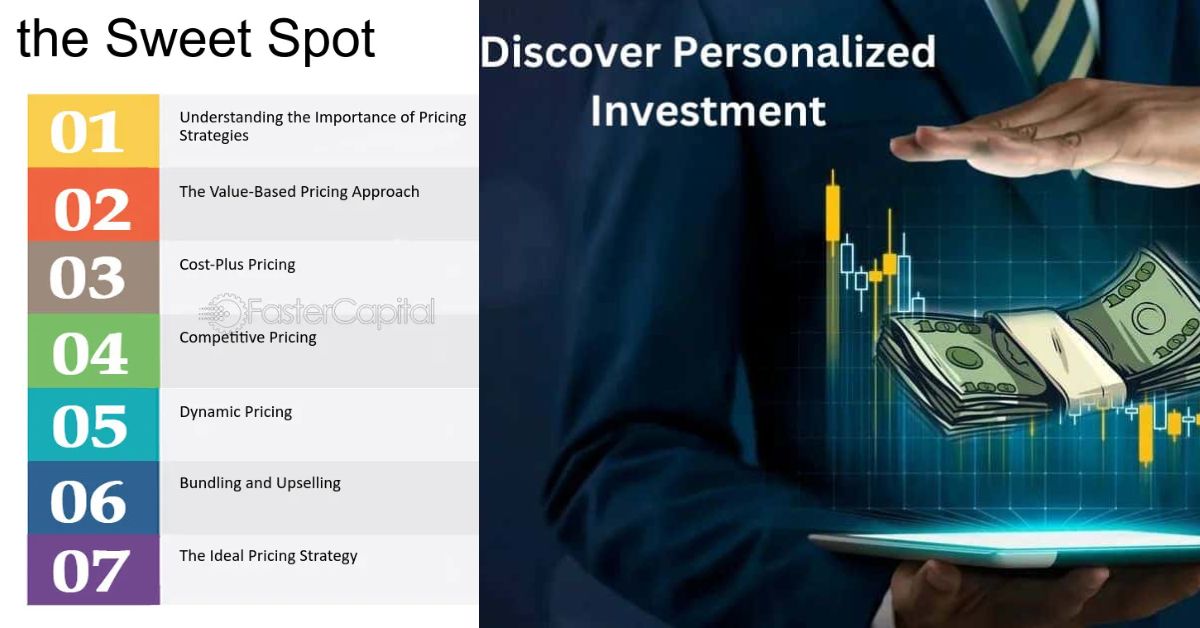Investing is a journey, not a one-size-fits-all destination. Each individual has unique financial goals, risk tolerances, and life situations that shape their optimal investment strategy. Personalized investing tailors strategies to these distinct factors, helping you maximize returns while aligning with your values and objectives.
This in-depth guide explores how to find your personalized investment sweet spot for better returns and long-term growth.
What is Personalized Investing?
Personalized investing is an approach that recognizes that investors have diverse needs, preferences, and constraints. Unlike traditional investing models that apply generic strategies, personalized investing crafts customized portfolios and plans based on an individual’s specific circumstances.
This approach offers several key benefits:
- Alignment with Goals: Strategies are tailored to your investment objectives, whether saving for retirement, funding education, or building wealth.
- Appropriate Risk Exposure: Portfolios are constructed based on your risk tolerance and investment time horizon.
- Tax Optimization: Investment vehicles and asset location are selected to maximize tax efficiency.
- Values Alignment: Socially responsible and ESG (Environmental, Social, Governance) investing principles can be integrated.
By accounting for these personal factors, personalized investing increases the likelihood of achieving your financial targets while suiting your lifestyle.
Assessing Your Investment Profile

The first step in personalized investing is to thoroughly evaluate your investment profile, which guides the selection of appropriate strategies and asset allocations. Here are some key considerations:
Investment Goals
Clearly define your investment objectives, such as:
- Retirement planning
- Funding education
- Building an inheritance
- Generating passive income
Your goals will shape the investment time horizon, desired returns, and overall approach.
Risk Tolerance
Risk tolerance is the degree of volatility you’re willing to accept in pursuit of potential returns. A younger investor with a long time horizon may have a higher risk tolerance than someone nearing retirement.
One way to assess your risk tolerance is through a questionnaire that evaluates your attitudes toward investment risks and losses. Here’s an example:
Risk Tolerance Questionnaire
- How would you react to a 20% decline in your investment portfolio’s value over a short period? a) Sell everything – I can’t handle that kind of loss. b) Sell some holdings to reduce exposure. c) Hold steady and wait for the market to rebound. d) View it as a buying opportunity and invest more.
- Which best describes your investment knowledge? a) Very limited b) Fairly knowledgeable c) Sophisticated
Your responses would indicate whether you have a conservative, moderate, or aggressive risk profile.
Investment Time Horizon
Your investment time horizon is the number of years remaining until you need to access your invested funds. A longer time horizon generally allows for a more aggressive approach as you can withstand shorter-term volatility.
Example Scenario
A 30-year-old investing for retirement at 65 has a 35-year time horizon, allowing for higher risk/return potential. Conversely, a 60-year-old investing for retirement in 5 years requires a more conservative approach to preserve capital.
Once you understand your goals, risk tolerance, and time horizon, you can construct an optimal asset allocation.
Factors Shaping Your Investment Sweet Spot
Several key factors determine your personalized investment sweet spot – the strategy that maximizes returns while respecting your constraints:
Investment Objectives and Strategy
Your objectives could include capital preservation, generating income, or aggressive growth. This dictates whether to employ an income, growth, or balanced investment strategy using an appropriate asset mix.
Asset Allocation and Diversification
Asset allocation is how your portfolio is divided across asset classes like stocks, bonds, real estate, and cash equivalents. Diversification further spreads risk by investing across different securities, sectors, and geographies.
A simple asset allocation for a balanced portfolio could be:
- 50% Stocks
- 30% Bonds
- 10% Real Estate
- 10% Cash/Cash Equivalents
More aggressive or conservative allocations would adjust these weightings.
Tax Optimization Strategies
Tax optimization techniques like asset location (holding tax-efficient investments in taxable accounts) and tax-loss harvesting can improve your portfolio’s after-tax returns.
Socially Responsible Investing (SRI) and ESG
For values-aligned investing, SRI and ESG integrate environmental, social, and governance factors into portfolio construction, avoiding undesirable sectors.
Hands-On vs. Passive, Auto-Investing Tools
Personalized investing can involve managing your portfolio hands-on or using passive, auto-investing tools like:
- Robo-advisors: Provide automated portfolio management based on your profile
- Target Date Funds: Asset mix automatically adjusts based on timeframe
- Model Portfolios: Pre-built portfolios align with specific objectives/risk profiles
The level of autonomy you desire can guide which solutions to leverage.
Finding the Right Investment Vehicles

With your objectives and constraints defined, you can select optimal investment vehicles like stocks, bonds, funds, and investment accounts:
Stocks
For long-term growth, stocks offer capital appreciation but higher volatility. Strategies include:
- Buy individual stocks
- Invest in stock funds (index funds, ETFs, mutual funds)
- Dividend investing
Bonds
Bonds provide a income stream and relative stability, though with lower return potential. Options include:
- Government bonds
- Corporate bonds
- Bond funds
Other Investments
Depending on your goals and risk profile, other investments to consider are:
- Real estate (REITs, rental properties)
- Commodities
- Alternatives (private equity, hedge funds)
Account Types
Selecting appropriate account types optimizes tax treatment:
- Tax-advantaged (401(k), IRA, 529) for long-term, retirement investing
- Taxable brokerage for more liquid needs
- Asset location strategies
Scenario Analysis
To illustrate portfolio personalization, consider these hypothetical examples:
Case Study 1: Retirement Portfolio
- Goals: Retirement in 20 years, capital preservation
- Risk Tolerance: Moderate
- Asset Allocation:
- 40% Stocks (Index Funds)
- 40% Bonds
- 10% Real Estate (REITs)
- 10% Cash/Cash Equivalents
- Tax Optimization:
- Max 401(k) contributions
- Bonds in tax-deferred accounts
- Overall: Balanced, diversified, tax-efficient
Case Study 2: Aggressive Growth Portfolio
- Goals: Wealth building, 30+ year horizon
- Risk Tolerance: High
- Asset Allocation:
- 80% Stocks (Individual and Low-Cost Funds)
- 10% Alternatives (Private Equity)
- 10% Real Estate (REITs)
- Tax Optimization:
- Tax-efficient funds in taxable accounts
- Tax-loss harvesting
- Overall: Higher risk/return, growth focus, tax efficiency
As you can see, portfolio composition varies dramatically based on inputs like time horizon, risk tolerance, and objectives. The key is selecting vehicles aligned with your personal investing profile.
Monitoring and Adjusting Your Strategy
Personalized investing isn’t a set-it-and-forget-it endeavor. Your strategy should evolve with your changing life circumstances:
Periodic Rebalancing
Over time, shifts in asset prices can cause your actual allocation to drift from its target. Rebalancing trims overweight assets and buys underweights to restore targets.
Tax-Loss Harvesting
This strategy captures capital losses to offset gains, reducing tax liability. It involves selling underperforming investments at a loss.
Major Life Events
Reassess your strategy with major life events like marriage, job change, inheritance, or retirement on the horizon.
“Your investment sweet spot isn’t stagnant – it evolves alongside your personal and financial circumstances.” – John Doe, Certified Financial Planner
Stick to Your Plan
While continual refinement is wise, resist the urge to radically overhaul a fundamentally sound strategy due to short-term market fluctuations.
Take Control of Your Investment Journey
Investing isn’t one-size-fits-all. By defining your financial goals, risk parameters, and personal values, you can discover a personalized investment strategy and sweet spot tailored for optimal growth.
Focus on building a diversified portfolio with the right asset mix and investment vehicles. Embrace a long term mindset, periodically refining your approach. With discipline and patience, you can achieve your financial goals while aligning with your principles.
So chart your own investment journey today the destination of financial independence awaits those who personalize their path.

“Meet Alena Genefair, a seasoned finance expert with over five years of experience and the esteemed author behind FinanceHookup. With a wealth of knowledge in financial management, investment strategies, mortgages, and banking, Alena provides insightful perspectives to readers. Her expertise helps individuals navigate the complexities of personal finance with clarity and confidence.”



